Albania is a historical treasure where every stone can tell a story. Across cities, hills, and the coastline, ancient castles rise proudly, enduring through time and carrying within them legends, battles, and moments of pride. These fortresses are not just monuments; they are gateways that take you back in time, through the eras of the Illyrians, Byzantines, Venetians, and Ottomans.
Beyond their historical value, many of them offer breathtaking panoramic views, ideal for explorers, photography lovers, and those who simply want to enjoy a glass of wine at sunset.
In this article, you’ll find a selection of top castles in Albania, with all the information you need to visit them: location, history, architectural features, and practical tips to make your trip unforgettable.
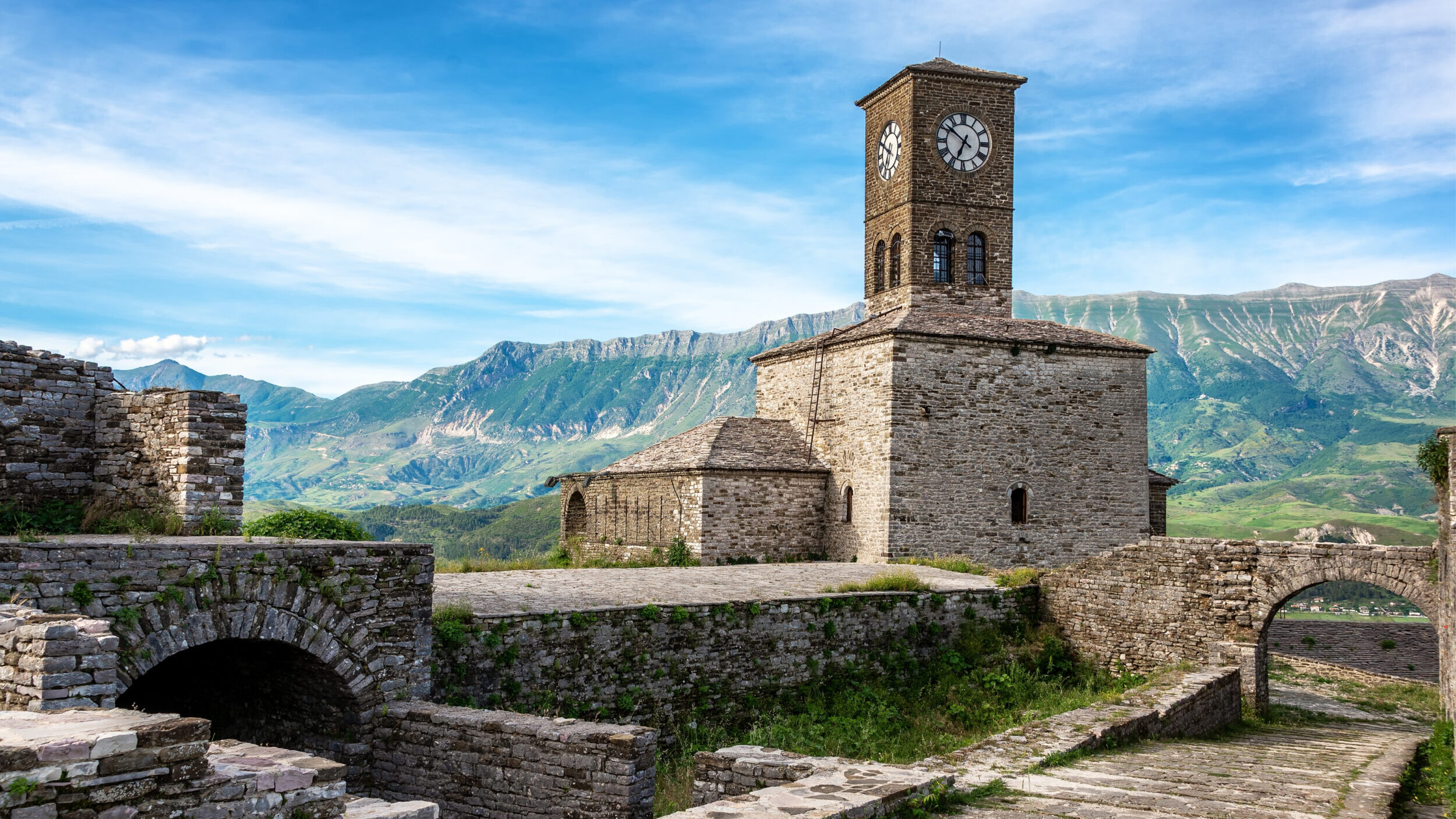
🏰 Summary Table of Castles
| Castle Name | Location | Century of Construction |
|---|---|---|
| Rozafa Castle | Shkoder | 4th–3rd century BC |
| Krujë Castle | Krujë | 5th–6th century AD |
| Gjirokastër Castle | Gjirokaster | 13th century AD |
| Berat Castle | Berat | 13th century AD |
| Petrele Castle | Petrele (Tirana) | 6th century AD |
| Porto Palermo Castle | Porto Palermo (Vlora) | 19th century AD |
| Bashtova Castle | Vilë-Ballaj (Kavaje) | 15th century AD (origin 6th century) |
| Kanina Castle | Kanina (Vlora) | 4th century BC (origin) |
| Himare Castle | Himare | 4th–5th century AD (rebuilt) |
| Lekuresi Castle | Sarande | 16th century AD (around 1537) |
🏰 Rozafa Castle – Shkodra That Tells Legends
📍 Location: Shkoder, 2 km from the city center, on a hill at the entrance of the city – View on map
Rozafa Castle is one of the oldest and most famous fortresses in Albania. Originally built by the Illyrians in the 4th–3rd centuries BC, it has undergone several reconstructions during Venetian and Ottoman rule. Most of the structure we see today dates from the Venetian period and is associated with the noble Balsha family in the 14th century.
Its thick stone walls and watchtowers form an impressive architectural complex, while inside, various relics from different eras are still preserved, such as 13th-century Orthodox churches, storage rooms, and a sophisticated water supply system. The castle served as both a defensive stronghold and a residential center throughout the centuries.
📌 Visitor highlights:
The legend of Rozafa, the woman who was walled in alive to keep the castle standing, gives the site a deeply emotional and symbolic dimension. It’s one of the most powerful tales in Albanian heritage, making every visit here a journey through both history and myth.

🏰 Kruje Castle – The Heart of Albanian Resistance
📍 Location: Krujë, 30 km north of Tirana, built on a limestone hill with majestic views – View on map
Krujë Castle is not just a fortress — it is one of the strongest symbols of national pride. Built in the 5th–6th centuries AD, it became the center of Albanian resistance against the Ottoman Empire in the 15th century under the leadership of national hero Gjergj Kastrioti Skanderbeg. The castle withstood three major Ottoman sieges and became synonymous with courage and defiance.
Its oval structure with thick stone walls and nine watchtowers stands out clearly in the landscape. Within its walls are priceless historical landmarks: the National Museum “Gjergj Kastrioti Skanderbeg”, the Ethnographic Museum with restored traditional houses, an old Ottoman mosque, and a Turkish bath (hamam).
📌 Visitor highlights:
The castle offers a true journey into the glorious medieval era of Albania. Walking through its courtyards feels like stepping back into Skanderbeg’s time, while from the top you can enjoy magnificent views over the Krujë plain and surrounding mountains, a perfect reminder of why this location was so strategic.

🏰 Gjirokaster Castle – The Queen Above Drino Valley
📍 Location: Gjirokaster, on a 336-meter-high hill in the heart of the historic city – View on map
Gjirokastër Castle is one of the largest in the Balkans and the symbol of the “City of Stone.” Built in the 13th century, it was significantly expanded and reconstructed by Ali Pasha Tepelena in the early 19th century, transforming it into a powerful military fortress.
Its thick stone walls, five watchtowers, spacious courtyards, and underground rooms make it an imposing structure. Inside, you’ll find the Arms Museum, an American WWII aircraft, and the National Folklore Festival Stage, where one of Albania’s most important cultural events takes place every five years.
📌 Visitor highlights:
The castle is part of the UNESCO World Heritage as part of Gjirokastër’s Historic Center. Visitors can enjoy stunning views over the Drino Valley while discovering centuries of history, from medieval walls to wartime memories.
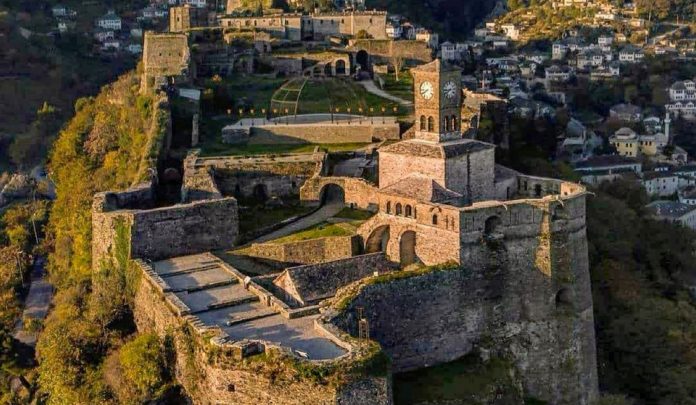
🏰 Berat Castle – The city of a thousand windows from above
📍 Location: Berat, on a 214-meter hill above the Osum River – View on map
Berat Castle is one of the most impressive and visited fortifications in Albania. Its history dates back to the Illyrian and Roman periods, while the current structure mainly originates from the 13th century, strengthened during Byzantine and Ottoman periods.
Within its vast walls with 24 defensive towers lies a living town — with cobblestone streets, inhabited houses, and over 14 medieval Orthodox churches, many of which feature frescoes and icons painted by the famous artist Onufri. Here you can also visit the Onufri Iconographic Museum, a must-see for art and religion lovers.
📌 Visitor highlights:
Unlike most castles, Berat Castle is still inhabited today. The panoramic view over the city and the Osum River is magical, while walking through its narrow alleys feels like a journey through time, a unique experience connecting you with Albania’s cultural roots.

🏰 Petrele Castle – A hidden gem in the hills of Tirana
📍 Location: Petrelë, 15 km southeast of Tirana – View on map
Built in the 6th century during Emperor Justinian’s reign, Petrelë Castle played an important strategic role in protecting trade routes and the southern entrance to Mount Dajti. During the Middle Ages, it came under the rule of the Topia family and later became part of Skanderbeg’s defensive network against the Ottomans.
The castle rises on a steep hill and is built from large stones, thick walls, and two distinctive watchtowers. Its structure offers a remarkable view over the surrounding valley and the rolling hills of Tirana.
📌 Visitor highlights:
Inside the castle, there’s a traditional café and restaurant with a panoramic terrace where you can enjoy a glass of wine or an authentic Albanian meal with stunning views. Petrelë is an ideal short getaway from Tirana, combining nature, history, and tranquility.

🏰 Porto Palermo Castle – The hidden secret of the coast
📍 Location: Porto Palermo Bay, between Himare and Qeparo – View on map
Porto Palermo Castle is one of the most unique in Albania, both for its location and its unusual architecture. It was built in the early 19th century by Ali Pasha Tepelena as a strategic naval fortress to protect the Ionian coast.
The castle has a triangular layout with three massive bastions at its corners, very thick walls, and an inner courtyard surrounded by arches. Inside, you can explore military quarters, storage rooms, and a watchtower. From its top, a stunning panorama of the tranquil bay and the turquoise sea unfolds.
📌 Visitor highlights:
The combination of history, isolation, and breathtaking nature makes this fortress a magical destination. It’s a perfect stop for those exploring the Albanian Riviera, especially photographers, adventurers, and history lovers.
🎶 During summer, the castle also becomes a cultural venue — from July 31 to August 17, it hosts the Porto Palermo Festival, a unique event blending music, art, and nature in an enchanting atmosphere.
📸See more on Instagram

🏰 Bashtova Castle – The silent fortress on the fields
📍 Location: Villa-Ballaj (Kavajë), 3 km from the Shkumbin River estuary – View on map
Bashtova Castle differs from most Albanian fortresses, flat, located in an open field near the sea, and with a rectangular shape. It was built by the Venetians in the 15th century on the foundations of an older Byzantine fortress and served to protect a trading port used for grain export.
The castle features three entrance gates and two large circular towers on its northern and eastern corners, with walls reaching up to 9 meters high. The surrounding landscape is peaceful, green, and untouched, offering a beautiful contrast between medieval architecture and wild nature.
📌 Visitor highlights:
Isolated, silent, and rare for its flatland location, Bashtova Castle is perfect for visitors seeking peace, unique photography, and a story that stands apart from typical hilltop fortresses.

🏰 Kanina Castle – The view that holds history
📍 Location: Kaninë village, 6 km south of Vlora, on a 380 m hill above sea level – View on map
Kanina Castle is one of the oldest fortifications in Albania, with foundations dating back to the 4th century BC. Mentioned by historian Procopius, it was rebuilt by Emperor Justinian and later integrated into the defensive systems of the Angevins and the Ottoman Empire. For centuries, it played a key strategic role in guarding the southern coastline.
Its structure is impressive, with three fortification phases and a perimeter of over 1 km. Inside, you can still see the ruins of houses, armament depots, and water reservoirs. From its top, visitors can enjoy a spectacular panorama of Vlora city, the Adriatic Sea, and the surrounding plains.
📌 Visitor highlights:
Kanina Castle offers one of the richest visual experiences in Albania. It’s an ideal combination for those seeking deep history, ancient architecture, and breathtaking views.
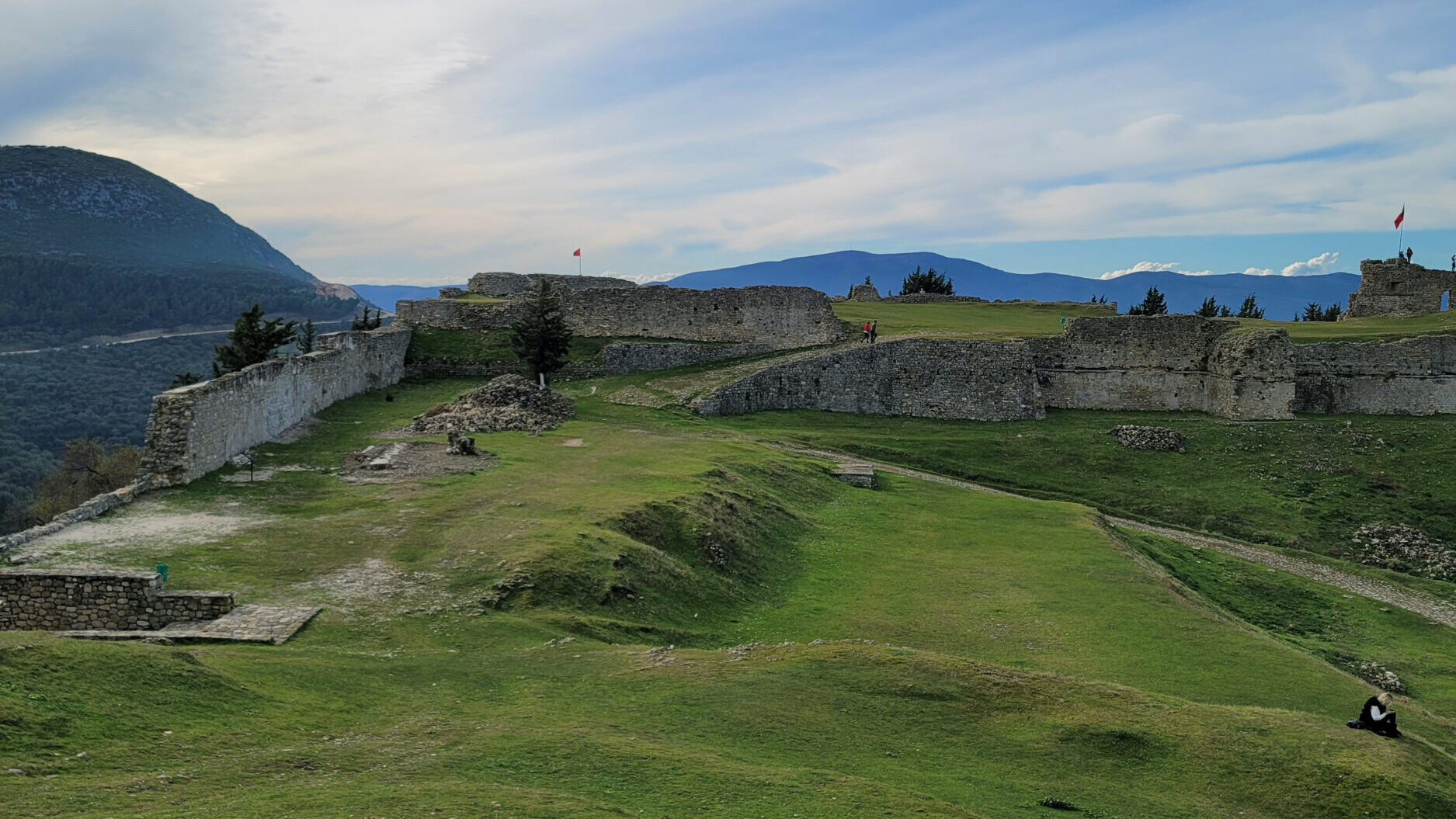
🏰 Himare Castle – Between stones and sea
📍 Location: Himarë, 1.5 km from the town center, on a hill overlooking the Ionian coast – View on map
Himarë Castle is a historical treasure and one of the most visited sites on the Albanian Riviera. Built on the remains of an ancient fort dating back to the 4th–5th centuries, it was reinforced in the Middle Ages by the Byzantines and later by the Venetians. Its thick walls, narrow stone alleys, and ruined churches create an authentic old-town feeling.
Inside, there are medieval churches, partially preserved walls, and a small café with a panoramic terrace, a favorite stop among visitors. From the top, the view over the Ionian Sea and the town of Himarë is stunning.
📌 Visitor highlights:
This castle is perfect for those who wish to combine history with tranquility and scenic beauty. Enjoying a glass of wine at the small café on top of the hill as the sun sets over the sea is an unforgettable experience.
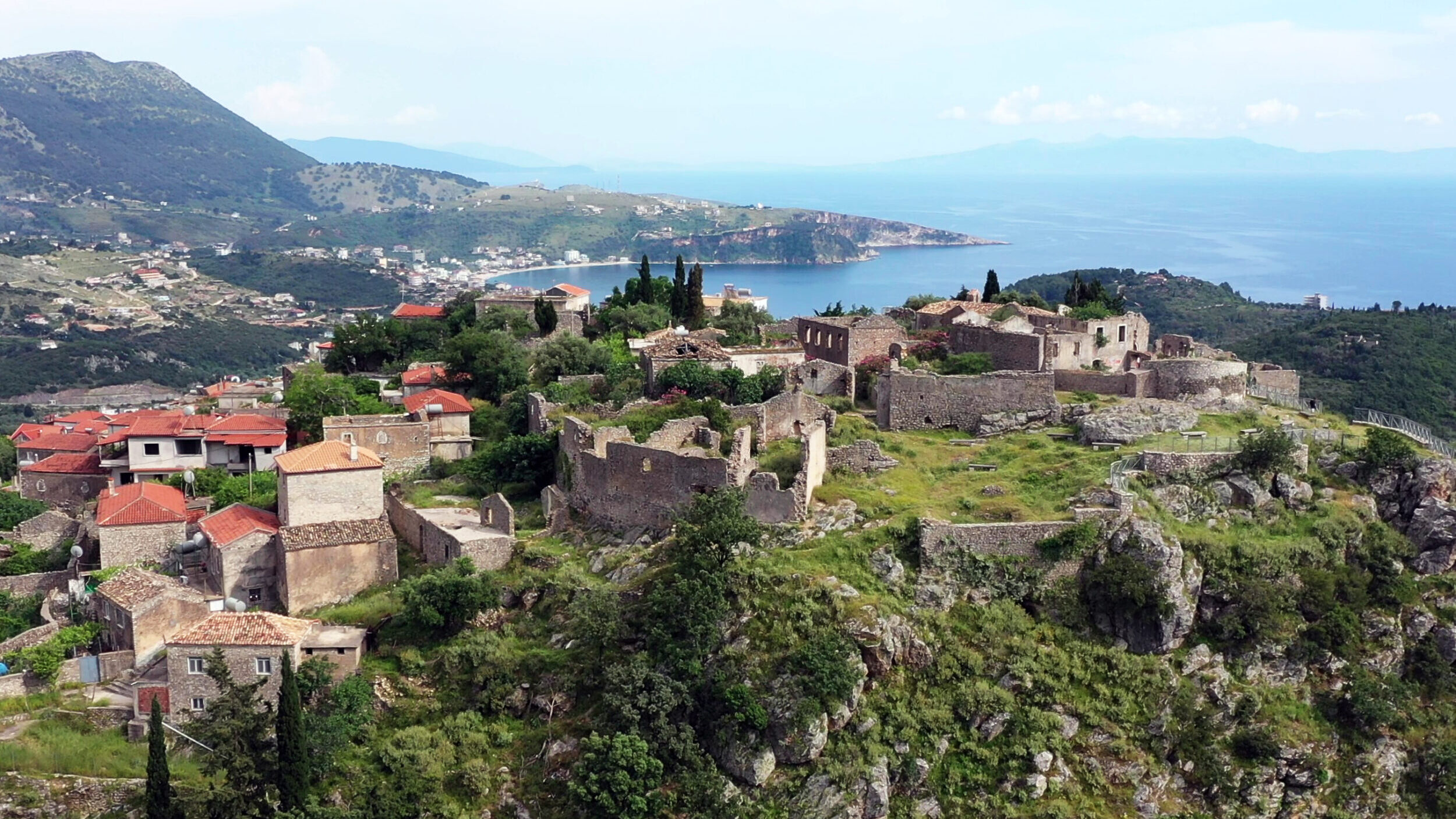
🏰 Lekuresi Castle – Where the Adriatic meets the Ionian
📍 Location: Sarandë, on a hill 3 km east of the city – View on map
Built by the Ottomans around 1537 during the reign of Suleiman the Magnificent, Lekuresi Castle is one of the most visited destinations in southern Albania. It controlled trade routes and the entrance from the sea, serving as a strategic defense point for Sarande and Butrint.
The castle has a square shape with round towers on each corner and has been well preserved. It has been partially restored and now houses a traditional restaurant with a panoramic terrace, a favorite spot for dinner with a view.
📌 Visitor highlights:
The view from Lëkurësi Castle is absolutely breathtaking, Sarande city, the Ionian Sea, and Corfu Island unfold before your eyes. It’s a perfect place to watch the sunset, take photos, and enjoy Albanian cuisine in a historic setting.
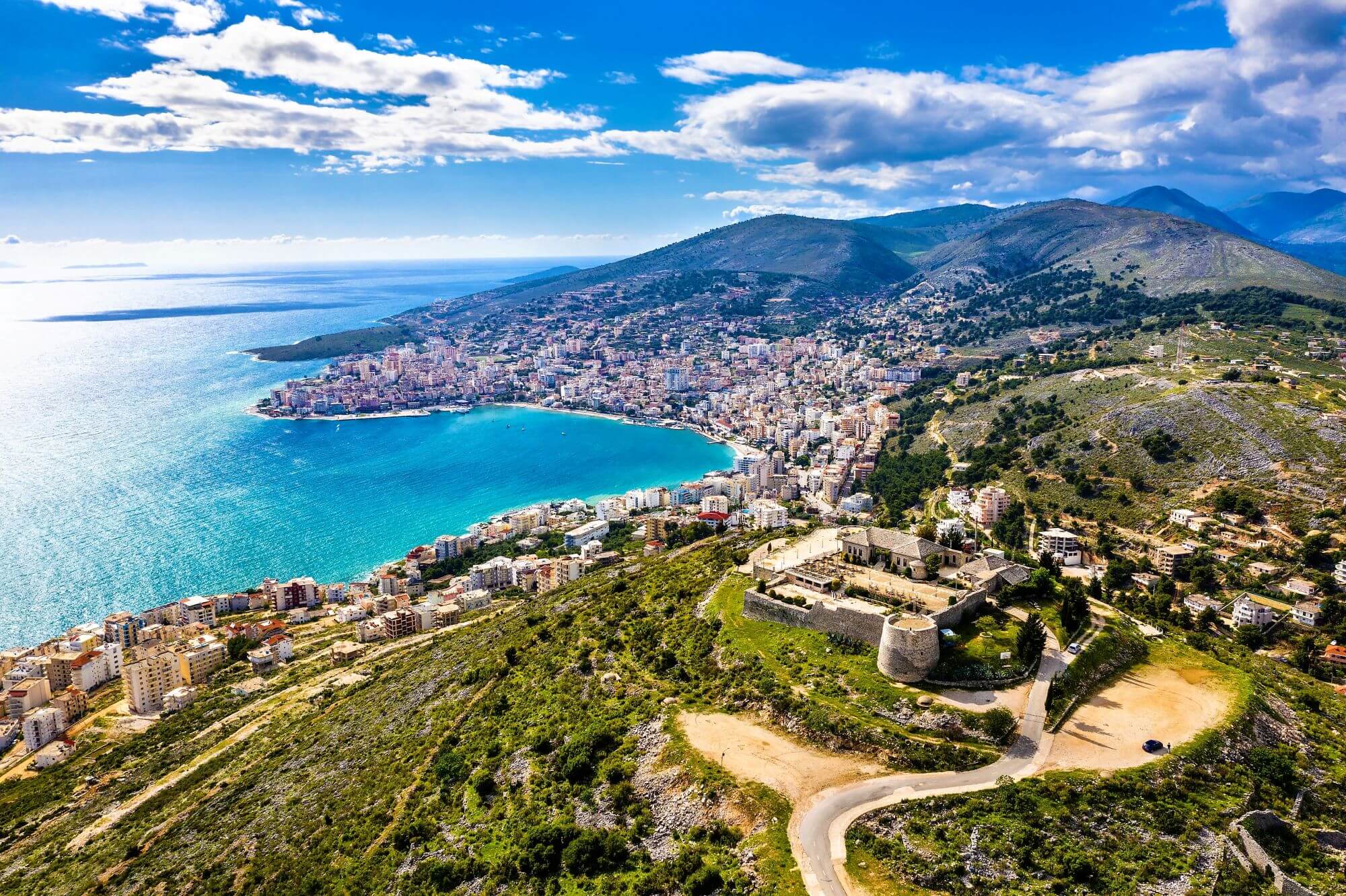
✨ A journey through history and emotion
Exploring the castles in Albania feels like stepping through the pages of a living history book. The thick stone walls, the narrow cobblestone paths, and the towers gazing toward the horizon create an atmosphere where history isn’t just remembered — it’s alive in every breath, every sound, and every view.
Each castle carries a soul of its own: Rozafa whispers her timeless legend, Krujë stands tall with unshakable pride, Gjirokastër reigns with a quiet and noble grace, while Berat shines with its thousand watching windows. Then come those intimate, unforgettable moments, sipping a coffee in Petrelë while overlooking Tirana, raising a glass of wine in Himarë as the sun sets over the sea, or standing in the peaceful silence of Bashtova surrounded by open fields.
These are not just monuments, they are living experiences. They are memories that linger long after you leave, echoes of Albania’s spirit carved in stone.
Why you should visit these castles
Albanian castles are far more than stone and walls. They are mirrors of history, keepers of legends, and gateways to an ancient culture that still beats at the heart of Albania. Each fortress represents an era, a resistance, a creative spirit, and a deep connection between the land and its people.
If you seek real emotions, breathtaking views, and stories that stay with you, these castles are the perfect destination.
📣 Did you feel the spirit of history? Share it!
If this article inspired you, share it with your friends, family, or fellow travelers. Let’s discover together the historical treasures of Albania and support local cultural tourism.
📌 For more guides, experiences, and inspiring stories, visit our blog: LoveAlbania


